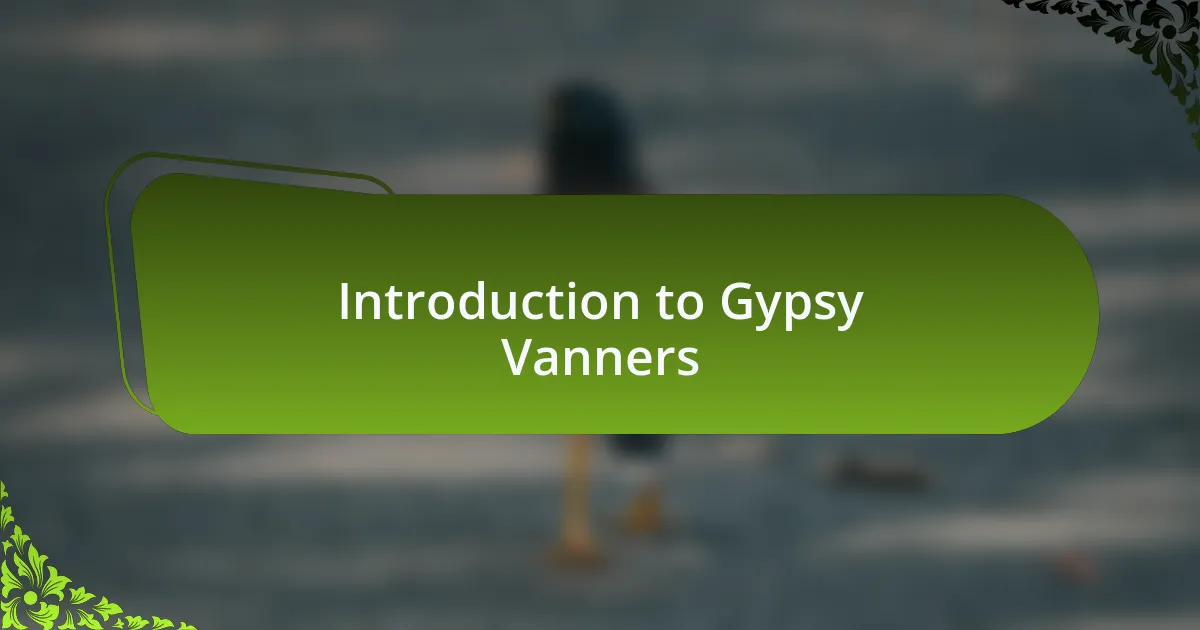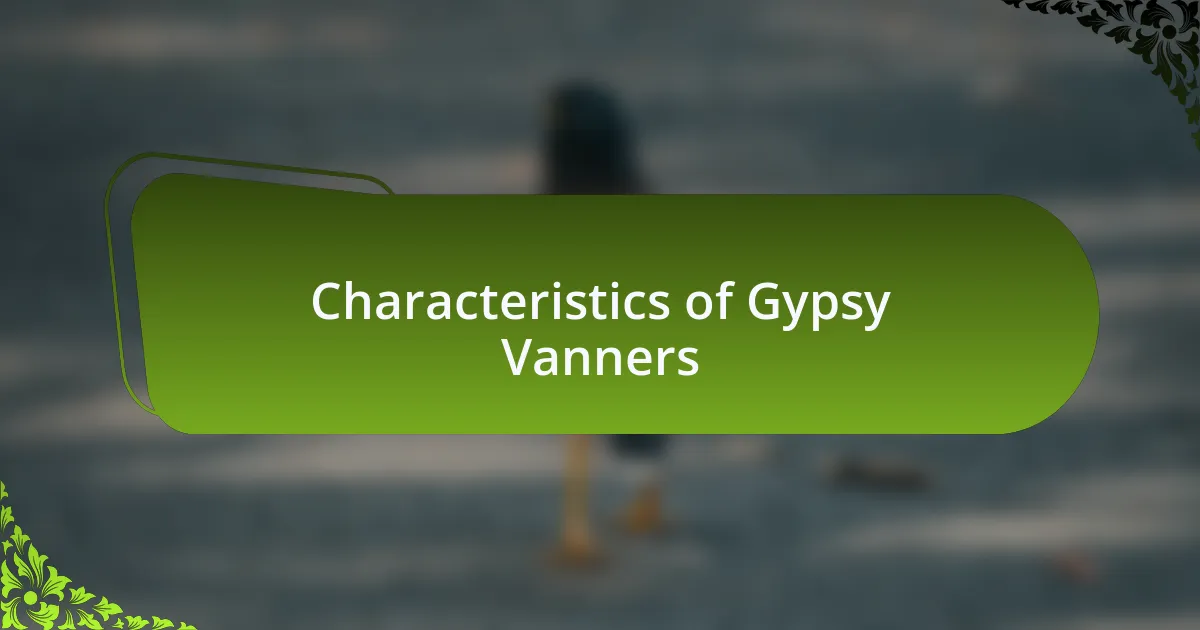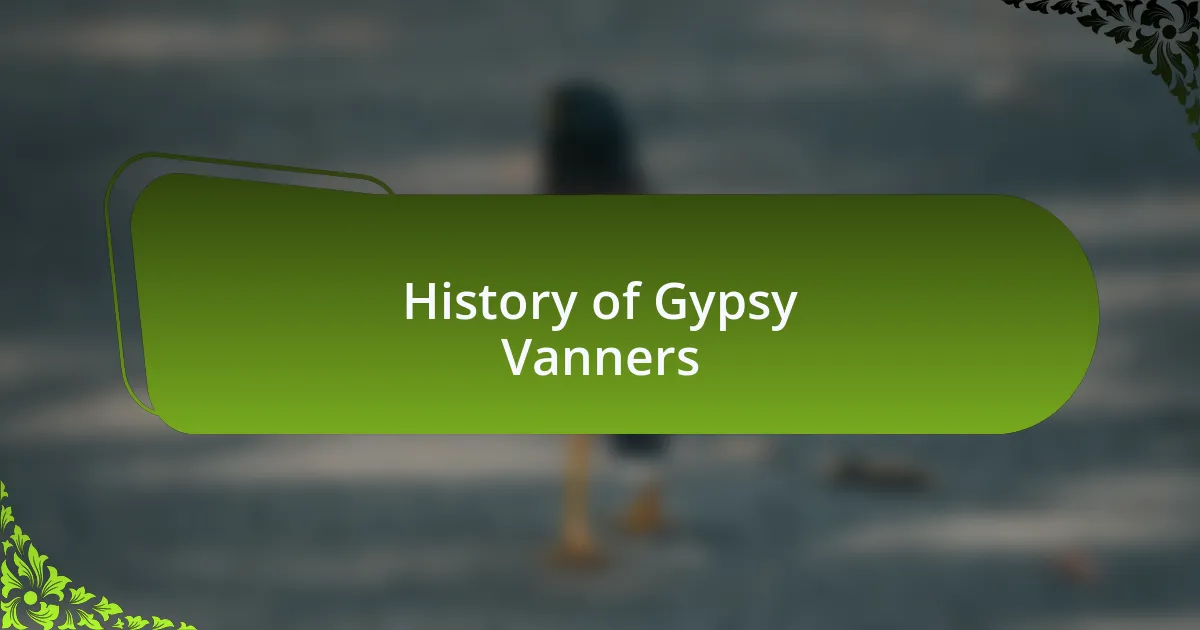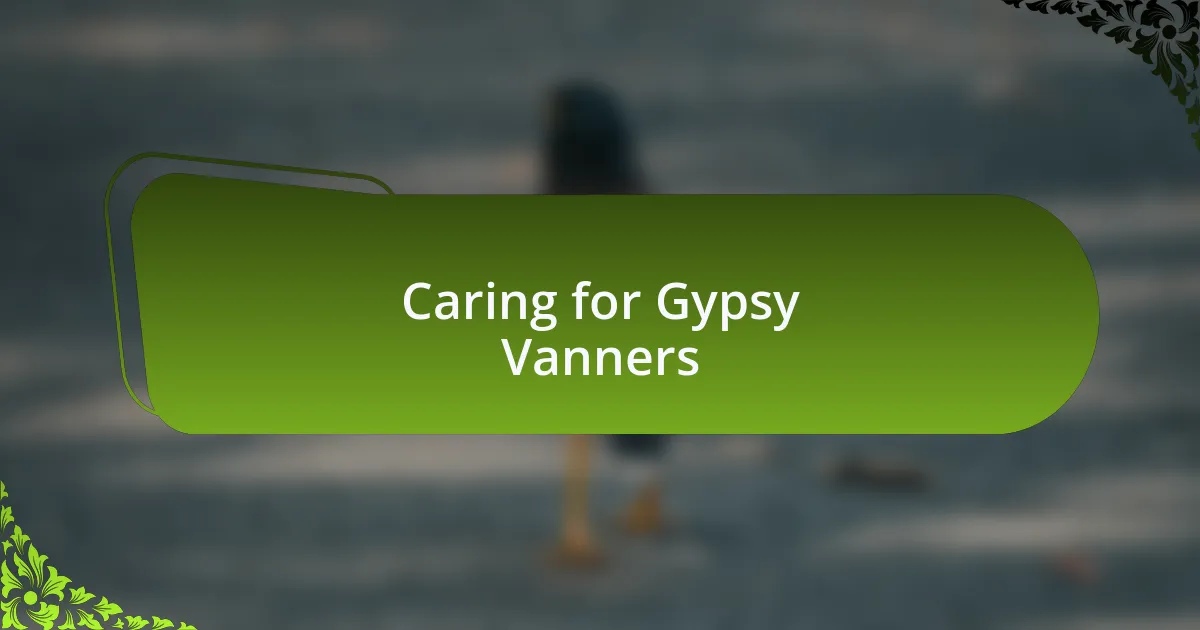Key takeaways:
- Gypsy Vanners, bred by the Romani people, are known for their beauty, gentle temperament, and versatility as companions and work animals.
- They possess distinctive physical attributes such as feathering on their lower legs and strong, stocky builds, making them easily recognizable.
- The breed’s history is deeply intertwined with the nomadic lifestyle of the Romani, evolving from a transportation role to a celebrated equestrian breed.
- Caring for Gypsy Vanners includes proper nutrition, regular grooming to strengthen bonds, and essential veterinary care for their well-being.

Introduction to Gypsy Vanners
Gypsy Vanners are truly a unique breed of horse, deeply rooted in history and culture. Originally bred by the Romani people in the British Isles, these horses were made for pulling caravans, and their captivating beauty matches their rich heritage. Have you ever seen one in motion? Their flowing manes and distinctive feathering give a magical quality to their presence.
I recall the first time I met a Gypsy Vanner at a local equestrian event; it was like stepping into a fairy tale. The moment that horse trotted by, I felt an overwhelming sense of connection to the stories and traditions behind them. This breed exudes not just beauty but also a gentle spirit and intelligence that can make any rider feel at home.
What I find particularly fascinating about Gypsy Vanners is how versatile they are. Whether you’re looking for a loyal companion for leisurely rides or a capable partner for work in the field, these horses seem to do it all with grace. Their temperament is renowned for being calm and friendly, which makes them a fantastic choice for families and equestrian enthusiasts alike. Isn’t it wonderful to think of how much joy and companionship they can bring into our lives?

Characteristics of Gypsy Vanners
Gypsy Vanners are easily recognizable due to their stunning physical attributes. With their stocky build and excellent bone structure, they embody both strength and beauty. When I first stood beside a Gypsy Vanner, I was amazed at how compact yet powerful they felt; it was as if they carried centuries of heritage in their muscular frames.
One of the standout features of these horses is their extraordinary feathering on the lower legs. This flowing hair not only adds to their charm but also serves a practical purpose, protecting them from harsh weather conditions. I remember watching a Vanner play in a field, its feathers dancing in the wind like a magical tapestry. How can anyone resist such a captivating sight?
Their temperament is another characteristic that truly sets them apart. Often described as gentle giants, Gypsy Vanners possess a calm demeanor that makes them ideal for riders of all ages and skill levels. I once had the pleasure of watching a young girl confidently ride a Gypsy Vanner, her laughter echoing as the horse trotted softly beneath her. Isn’t it heartwarming to see such trust and connection between horse and rider?

History of Gypsy Vanners
The Gypsy Vanner, also known as the Gypsy Cob, has deep-rooted origins linked to the nomadic Romani people of Britain. This breed was carefully developed by these traveling folks to pull their caravans, making strength and endurance paramount. I recall hearing stories from horse enthusiasts about how these horses were not just transportation; they were part of the family’s way of life, ensuring that traditions and practices were preserved over generations.
In the late 20th century, the breed gained recognition beyond its traditional role when enthusiasts began to showcase the beauty and versatility of Gypsy Vanners in various equestrian disciplines. I remember attending a horse fair where a stunning Gypsy Vanner caught my eye; its graceful movements and vibrant coat captivated everyone. This breed’s journey from the fields of gypsy camps to competitions and exhibitions reflects its incredible adaptability and charm.
Today, the Gypsy Vanner stands as a symbol of heritage and resilience, celebrating a legacy that transcends time. The stories these horses carry, intertwined with history and family traditions, are a testament to their deep connection with people. Have you ever felt that bond with a horse? For me, it’s a reminder of how animals can carry our stories as much as we carry theirs.

Caring for Gypsy Vanners
Caring for Gypsy Vanners requires a special blend of attention and affection. These horses thrive on companionship and need regular interaction to feel secure and happy. I often spend time just grooming my Vanner, which not only keeps his coat healthy but also strengthens our bond. Have you ever noticed how a simple grooming session can calm both the horse and the handler? It’s one of my favorite parts of caring for these beautiful creatures.
Nutrition is another critical element in their care. Gypsy Vanners, known for their distinct build, require a balanced diet rich in high-quality forage and appropriate supplements. I learned the hard way that overfeeding can lead to weight issues, especially since they can easily gain excess pounds. Watching my horse maintain a healthy weight not only improves his overall well-being but also enhances his playful spirit. It’s fascinating how the right diet can truly illuminate their personality.
Lastly, regular veterinary check-ups and hoof care are non-negotiable for maintaining the health of your Gypsy Vanner. I’ve worked closely with a farrier who understands their unique hooves, and it made such a difference in my horse’s comfort and performance. Have you ever felt the difference in a horse after a well-done trim? It’s like watching them rediscover their joy in movement. It’s this little attention to detail that ensures they remain the vibrant, spirited companions we all adore.